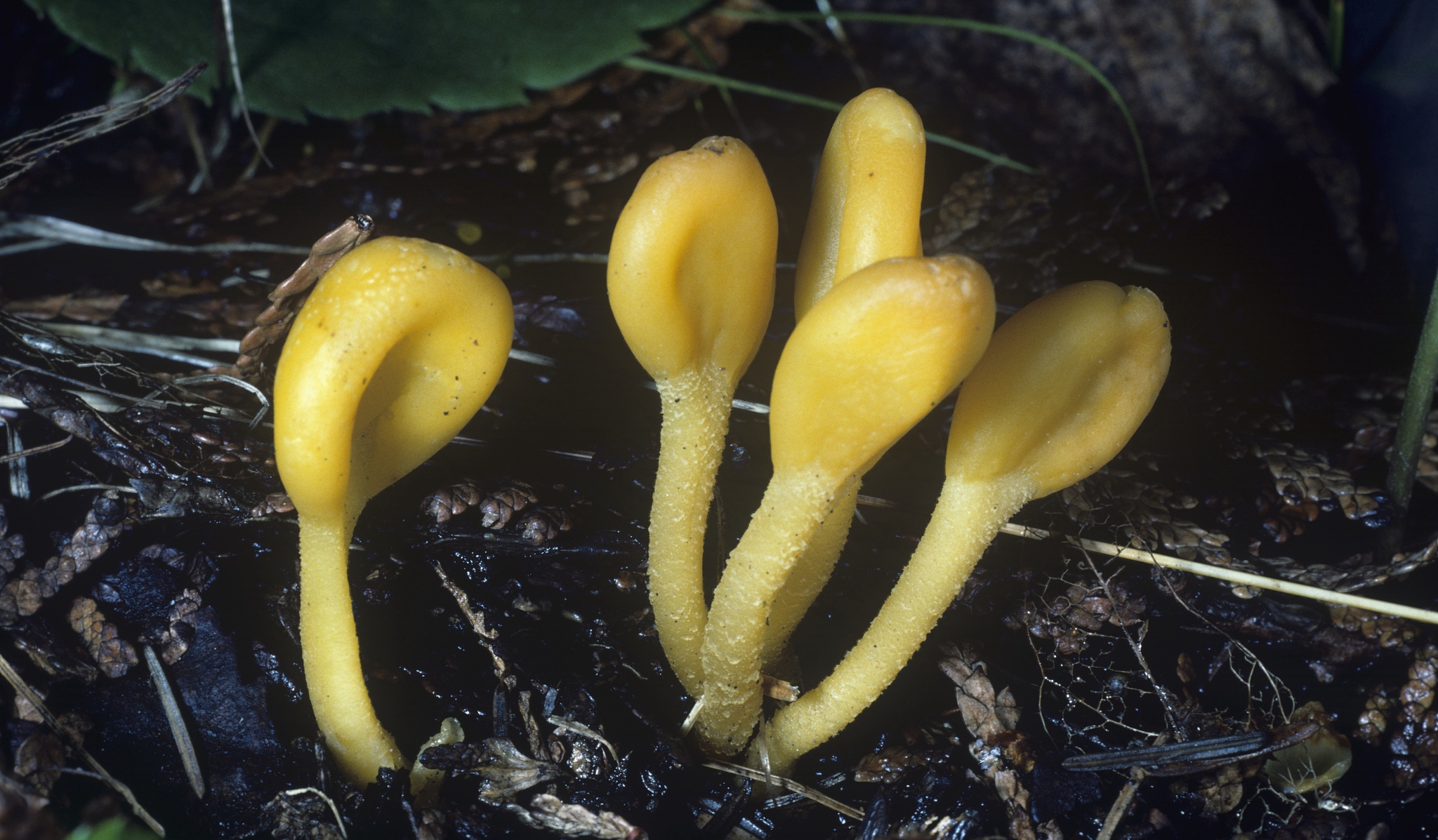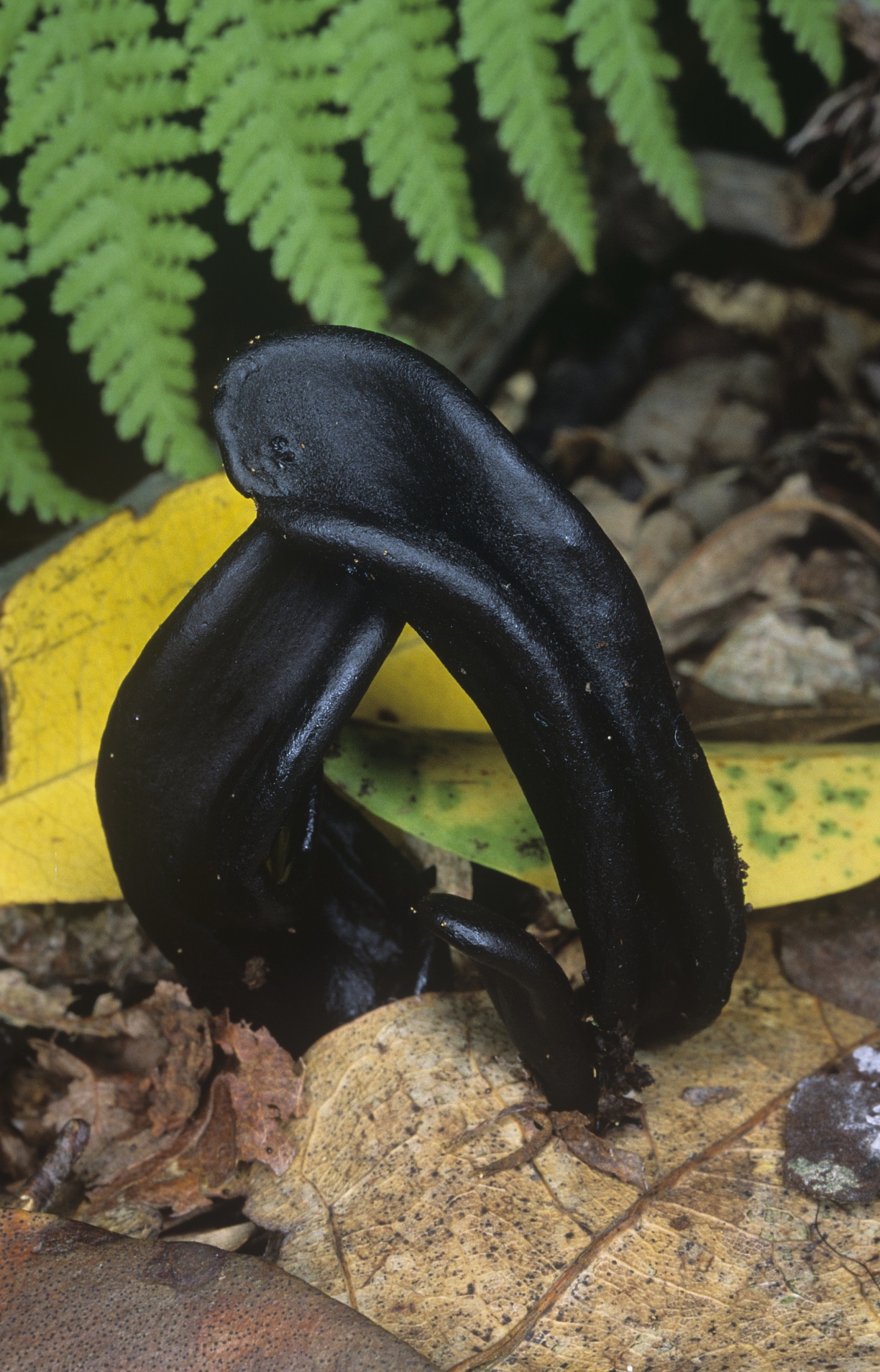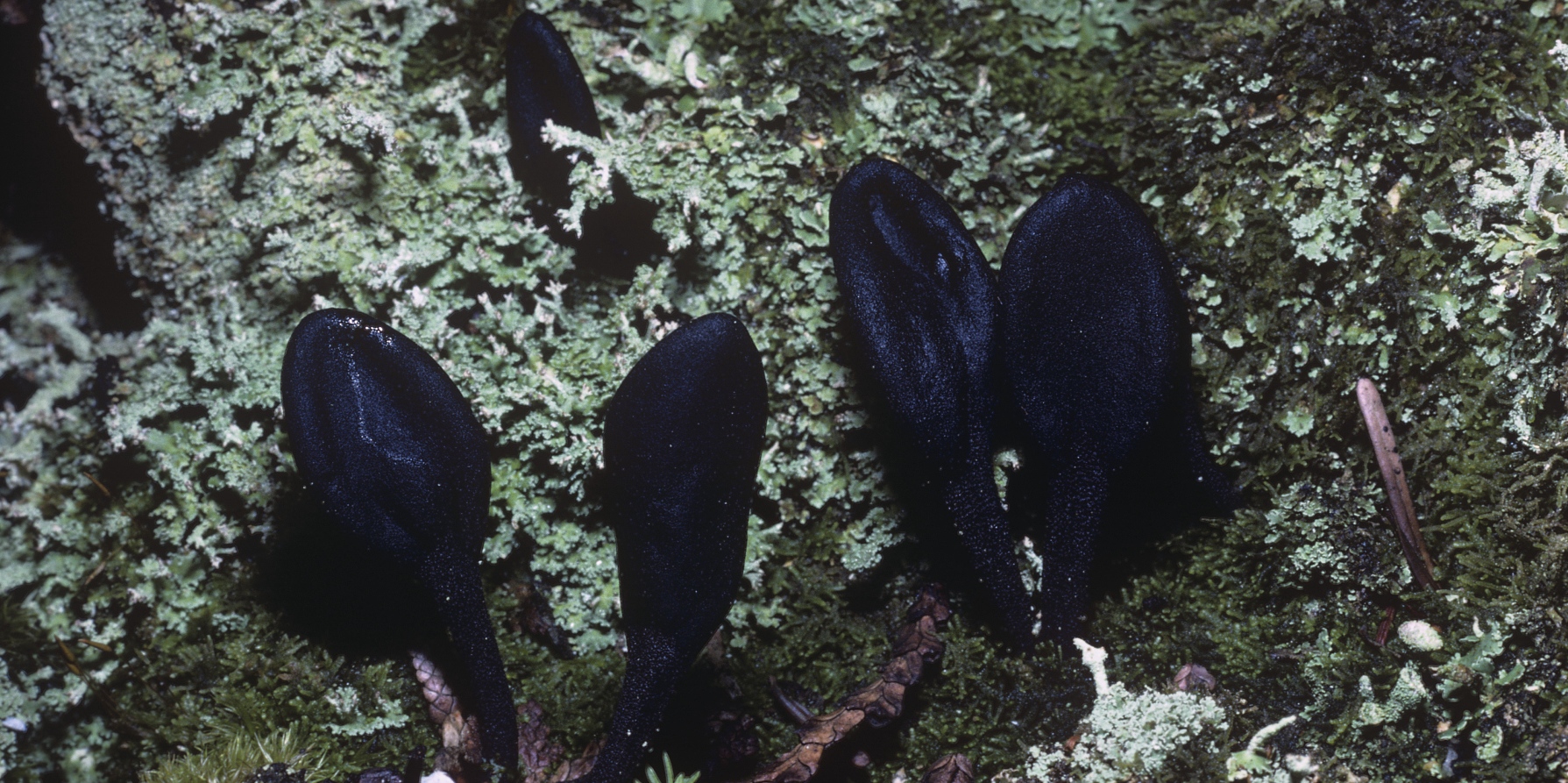Mother Nature is always the best fantasy creators. Have you ever imagined that earth has "tongues" sticking out from the ground to take in food? Well, there are a bunch of fungi having peculiar tongue-shaped heads. They mostly come from the Geoglossaceae family, and are generally known as earth tongues.

Orange earth tongue (Microglossum rufrum) in North America. /CFP
Orange earth tongue (Microglossum rufrum) in North America. /CFP
Different from our pink tongues, earth tongue fungi are commonly black or yellow. For starters, there are several tips to distinguish different types of earth tongues. Mushrooms in the genus of Geoglossum and Trichoglossum are black, while fungi in the genus of Microglossum are olive green to brown.
If you want to make a distinction between Geoglossum and Trichoglossum species, you might need the help of a hand lens. Trichoglossum species have a bristly stem and tiny "hairs" on the spore bearing surface, while Geoglossum species have a smooth surface. That's why Trichoglossum species are also called hairy earth tongues.

Velvety earth tongue (Trichoglossum hirsutum) in North America. /CFP
Velvety earth tongue (Trichoglossum hirsutum) in North America. /CFP
Earth tongues are cosmopolitan. They have been found in all continents except Antartica. If you want to find them in your home country, you can look closely at soil in moss beds or in grassy areas from the summer through the fall. In North America, they are commonly spotted in coniferous woodland and broad-leaved woodland, whereas in Europe they are seen in grasslands, particularly the waxcap grassland.
In Europe, nutrient-poor waxcap grasslands are in decline as a result of agricultural practices like ploughing, manuring and the use of fertilizers. These grasslands support a wide range of larger fungi, including earth tongues. Therefore, some earth tongue species are endangered and in need of urgent conservation. For example, Geoglossum simile is listed as threatened with extinction in Austria and Germany, critically endangered in Denmark, and vulnerable in the Netherlands. Their presence often indicates limited human disturbance.

Geoglossum simile in North America. /CFP
Geoglossum simile in North America. /CFP

